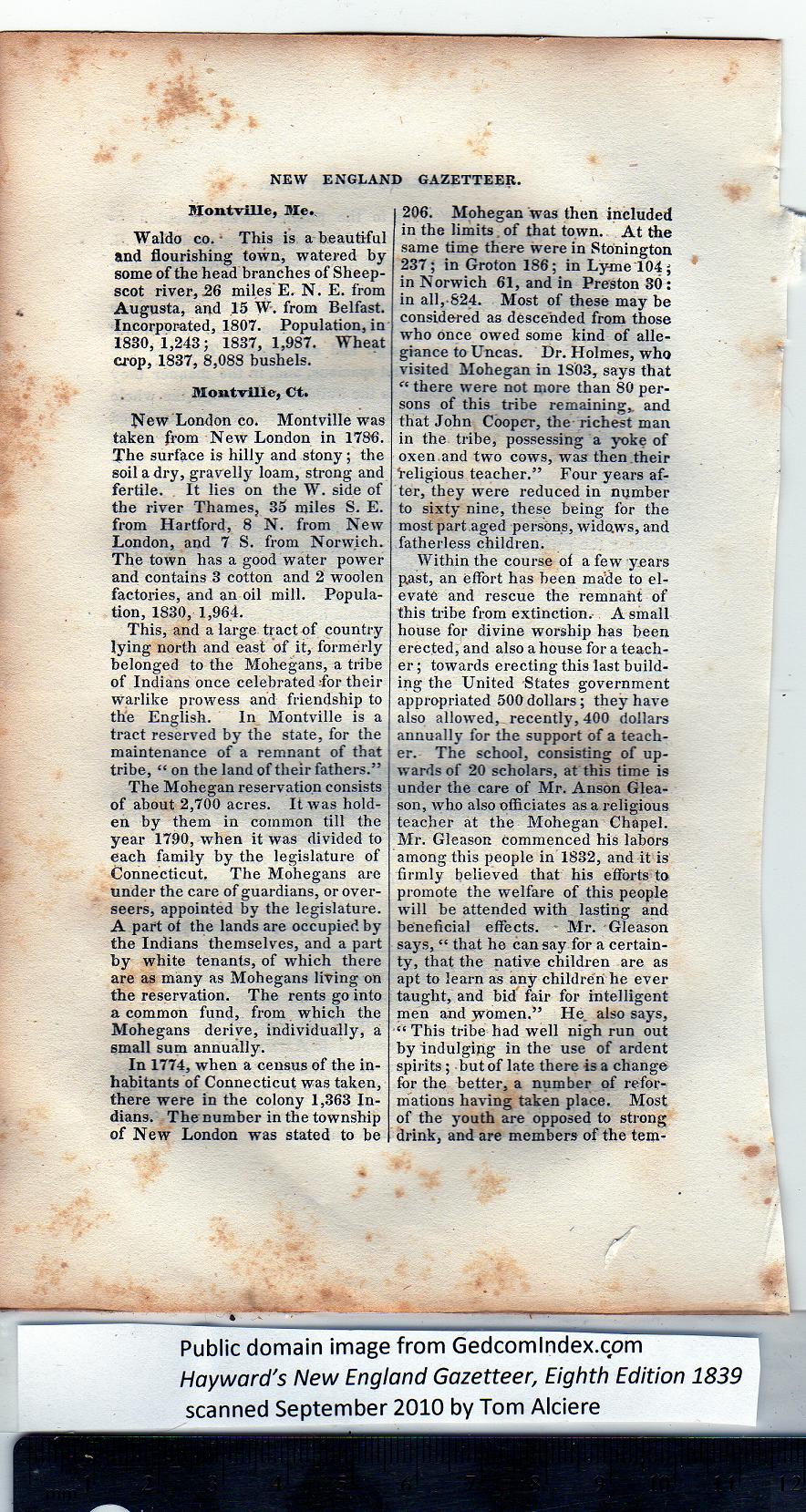|
Montville, Me.,
Waldo co. • This is a beautiful
and flourishing town, watered by
some of the head branches of Sheep-
scot river, 26 miles E. N. E. from
Augusta, and 15 W. from Belfast.
Incorporated, 1807. Population, in
1830,1,243; 1837, 1,987. Wheat
crop, 1837, 8,088 bushels.
Montville, Ct.
£Iew London co. Montville was
taken from New London in 178A.
The surface is hilly and stony; the
soil a dry, gravelly loam, strong and
fertile. It lies on the W. side of
the river Thames, 35 miles S. E.
from Hartford, 8 N. from New
London, and 7 S. from Norwich.
The town has a good water power
and contains 3 cotton and 2 woolen
factories, and an oil mill. Popula-
tion, 1830, 1,964.
This, and a large tract of country
lying north and east of it, formerly
belonged to the Mohegans, a tribe
of Indians once celebrated'for their
warlike prowess and friendship to
the English. In Montville is a
tract reserved by the state, for the
maintenance of a remnant of that
tribe, “ on the land of their fathers.”
The Mohegan reservation consists
of about 2,700 acres. It was hold-
en by them in common till the
year 1790, when it was divided to
each family by the legislature of
Connecticut. The Mohegans are
under the care of guardians, or over-
seers, appointed by the legislature.
A part ot the lands are occupied by
the Indians themselves, and a part
by white tenants, of which there
are as many as Mohegans living on
the reservation. The rents go into
a common fund, from which the
Mohegans derive, individually, a
small sum annually. |
In 1774, when a census of the in-
habitants of Connecticut was taken,
there were in the colony 1,363 In-
dians. The number in the township
of New London was stated to be
206. Mohegan was then included
in the limits of that town. At the
same time there were in Stonington
237; in Groton 186; in Lyme 104;
in Norwich 61, and in Preston 30:
in all,-824. Most of these may be
considered as descended from those
who once owed some kind of alle-
giance to Uncas. Dr. Holmes, who
visited Mohegan in 1S03, says that
“ there were not more than 80 per-
sons of this tribe remaining,, and
that John Cooper, the richest man
in the tribe, possessing a yoke of
oxen.and two cows, was then their
Religious teacher.” Four years af-
ter, they were reduced in number
to sixty nine, these being for the
most part.aged persons, wido.ws, and
fatherless children.
Within the course ot a few years
p,ast, an effort has been made to el-
evate and rescue the remnant of
this tribe from extinction. A small
house for divine worship has been
erected, and also a house for a teach-
er; towards erecting this last build-
ing the United States government
appropriated 500dollars; they have
also allowed, recently, 400 dollars
annually for the support of a teach-
er. The school, consisting of up-
wards of 20 scholars, at this time is
under the care of Mr. Anson Glea-
son, who also officiates as a religious
teacher at the Mohegan Chapel.
Mr. Gleason commenced his labors
among this people in 1832, and it is
firmly believed that his efforts to
promote the welfare of this people
will he attended with lasting and
beneficial effects. Mr. Gleason
says, “ that he can say for a certain-
ty, that the native children are as
apt to learn as any children he ever
taught, and bid fair for intelligent
men and >vomen'5S He, also says,
“ This tribe had well nigh run out
by indulging in the use of ardent
spirits; but of late there is a change
for the better, a number of refor-
mations having taken place. Most
of the youth are opposed to strong
drink, and are members of the tem- |
